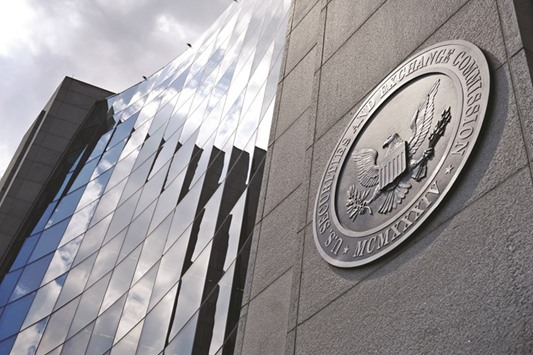Confronted with a sluggish global economy, US companies have settled on a controversial tool that rewards shareholders and executives: share buybacks.
First permitted by the US Securities and Exchange Commission in 1982, the use of share buybacks has spread rapidly over the last five years due in part to pressure from activist investors anxious for a quick payoff.
When companies buy back shares, the shares remaining on the market rise in value due the tighter supply, an immediate boon to shareholders. Executives also benefit when their compensation is tied to the share price, often through rich stock options.
But critics point out that companies spending billions of dollars of shareholder funds on buybacks means the funds are not being invested in new plants, higher salaries and other areas that boost the company and the broader economy.
Over the past two years, at least 20% of S&P 500 companies have trimmed their share count by at least four%, said Howard Silverblatt, analyst at S&P Dow Jones Indices.
The net effect is to increase the companies’ earnings-per-share by at least four%. But as a study by University of Chicago professors Daniel Bens, Franco Wong and Douglas Skinner, that gain “cannot be attributed to improved firm performance.”
The surge in spending on buybacks has been huge. In 2009, the 500 biggest publicly-traded companies in the US spent 27.5% of their $500bn in operating profits on buybacks, according to S&P Indices.
By 2015, they spent 64.7% of $885.3bn in earnings on buybacks.
Apple led the way with last year putting $37bn in buybacks, followed by Microsoft with $17.9bn and Qualcomm with $11.6bn.
Making that possible has been the companies’ lofty cash holdings, which stood at $1.3tn at the end of 2015 among the S&P 500, according to Silverblatt.
They “have to do something with their cash,” said Silverblatt.
But some also take advantage of low interest rates to borrow money to fund buybacks.
Apple in February announced a debt offering of $12bn to finance buybacks and share dividends, even as it holds more than $200bn in cash, much of it overseas.
The market has taken a kind view of buybacks. Shares of 100 companies that undertook buybacks in 2014 outperformed their competitors who used funds to build factories or hire employees, according to a study by Barclays.
And buybacks have accounted for about 21% of the rise of the S&P 500 since 2009, according to S&P Dow Jones Indices.
But not everyone is sold. For one, critics point out that frequently buybacks mask poor performance: a buyback can increase a company’s earnings per share even as overall earnings fall.
William Lazonick, an economist at the University of Massachusetts at Lowell, said buybacks also do not ensure companies stay prosperous by investing in their businesses.
“You are manipulating the stock prices,” he said. “And then you are not creating value.
You are extracting value that workers and taxpayers and others created.”
“The only logic is that the people who are making those decisions want to get stock prices up so they can sell the stock and enrich themselves.”
Politicians, too, have taken up the issue.
Hillary Clinton, the favourite to win the Democratic nomination for president, said last year that she supports reforms to ensure that buybacks aren’t used just to boost share prices.
Elizabeth Warren, the progressive Democratic Senator from Massachusetts, also favours reining in the “sugar high” from buybacks.
Critics say there is also a link between runaway buybacks and the rising gap between rich and poor.
“If the US is to achieve economic growth with an equitable income distribution and stable employment opportunities, government rule-makers and business decision-makers must take steps to bring both executive pay and stock buybacks under control,” Lazonick wrote in an April 2014 paper.

The headquarters of the US Securities and Exchange Commission in Washington. First permitted by the SEC in 1982, the use of share buybacks has spread rapidly over the last five years due in part to pressure from activist investors anxious for a quick payoff.
